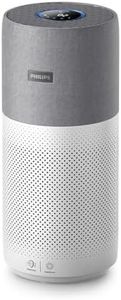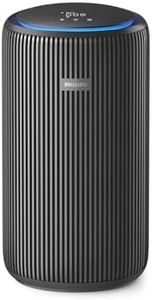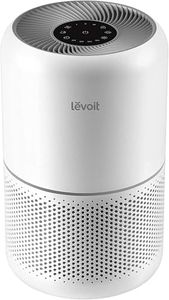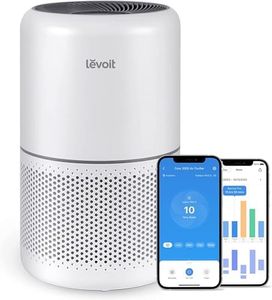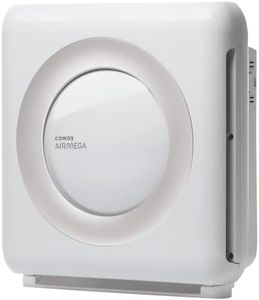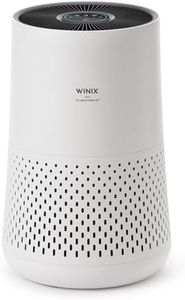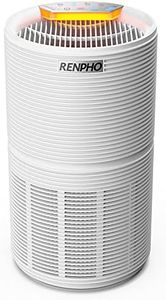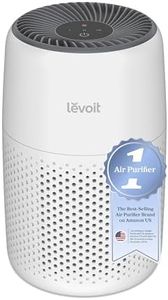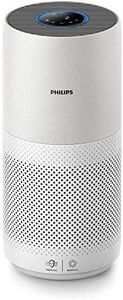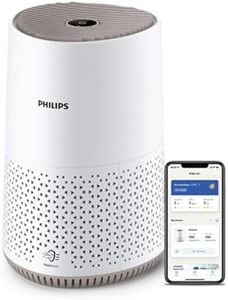We Use CookiesWe use cookies to enhance the security, performance,
functionality and for analytical and promotional activities. By continuing to browse this site you
are agreeing to our privacy policy
10 Best Odor Eliminator Air Purifier
From leading brands and best sellers available on the web.Recommended lists
Buying Guide for the Best Odor Eliminator Air Purifier
When choosing an odor-eliminator air purifier, it's important to ensure the device will effectively remove unwanted smells while also improving the overall air quality of your space. Not all air purifiers work the same way or target the same types of pollutants, so understanding the important features can help you make a smart purchase that fits your specific needs.Filter TypeThe filter type is crucial in odor-eliminator air purifiers because it determines what kind of particles and smells the device can trap or neutralize. For odors, activated carbon filters are particularly important as they are designed to absorb gases and smells that a standard HEPA filter might miss. Some purifiers combine HEPA filters (which catch dust, pollen, and pet dander) with activated carbon. When considering filter types, look for devices that specifically mention odor removal or activated carbon. If you suffer mainly from allergies in addition to odors, a combination filter might be best, while for pure odor concerns, carbon-focused filters are more effective.
Coverage AreaCoverage area tells you how much space (measured in square feet or meters) the purifier can effectively clean. This is important because a purifier that's too small for your room won't remove odors efficiently. Coverage areas typically range from small (up to 150 square feet, good for bedrooms or offices), medium (150-400 square feet, suitable for living rooms or larger bedrooms), to large (over 400 square feet, ideal for open-plan areas or large spaces). To choose the right coverage, measure your room and pick a purifier rated for at least that size or a bit larger for best results.
Air Changes Per Hour (ACH)ACH indicates how many times per hour the purifier can filter the entire volume of air in your room. This spec is important for odor elimination because more frequent air changes mean smells are removed faster. ACH values can range from 2 (minimal cleaning, slower results) to 5 or more (very thorough cleaning). If you want quick odor removal, look for higher ACH ratings. For spaces that need constant freshening—like kitchens, pet areas, or rooms with smoke—aim for a higher ACH.
Noise LevelNoise level, usually measured in decibels (dB), matters because purifiers can be used in places where quiet is desired, like bedrooms or offices. Lower dB levels mean quieter operation. Noise levels below 30 dB are considered very quiet, 30–50 dB is average and tolerable for most living areas, while above 50 dB could be distracting. Decide where you'll use your air purifier most and pick a model whose noise rating matches your tolerance for background sound.
Maintenance RequirementsMaintenance requirements refer to how often you need to clean or replace filters and how easy it is to do so. This is important because neglecting maintenance can reduce the effectiveness in removing odors. Some purifiers have indicator lights for filter replacement, while others require regular checking. If you prefer low-effort upkeep, look for models with long-lasting filters or simple filter access. Consider your willingness to perform regular maintenance when making your choice.
Additional FeaturesSome air purifiers come with extra features such as air quality sensors, timer functions, auto-mode, and smart controls. While not always necessary for odor removal, these features can add convenience and help optimize performance. For example, an auto-mode adjusts the fan speed based on odor or air quality detected. Choose extra features based on your personal preferences for convenience and ease of use.
